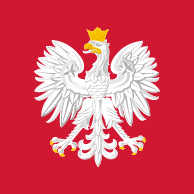- Storing medicines and raw materials
Medicinal products and medical goods must be stored in the pharmacy in a manner allowing the preservation established quality requirements and safety storage for the medicinal products or medical goods. As a result, they should be protected from dust, dirt and damage. Stored medicinal products and medical goods cannot directly touch the walls and floors in the place of storage.
In particular, separate storage is required for:
1) readymade drugs for internal use and readymade drugs for external use;
2) narcotic drugs from groups IN and II-N, psychotropic substances in groups II-P, III-P and IV-P, precursors from group IR and very strong pharmaceuticals;
3) products in the form of food substances, supplements, hygiene products, etc.
In turn, pharmaceutical raw materials for the preparation of prescription drugs and pharmaceutical medicines and homeopathic products must be stored in the original packaging, or in the vessels corresponding to their properties, bearing legibly and indelibly marks, and protected from the harmful effects of light, moisture and dust, as well as penetration of external odours into them.
The rooms in which medicinal products and medical goods are stored must be clean, dry, properly ventilated, and the medicinal products and medical goods protected against sunlight.
- Records
A pharmacy must keep records of prescription medicines, pharmaceutical drugs and homeopathic products prepared in the pharmacy.
Records of prescription medicines prepared in the pharmacy include:
1) the date and time of receiving the prescription for implementation;
2) the date and time of preparation of prescribed medicine;
3) control number of the prescription;
4) the name and signature of the person who prepared the medicine.
Records of homeopathic products prepared in the pharmacy, on the basis of a medical prescription, include:
1) the date of receiving the prescription for implementation;
2) the date of preparation of the homeopathic product;
3) control number of the prescription;
4) the name and signature of the person who prepared the medicine.
Records of pharmaceutical drugs and homeopathic products prepared in the pharmacy, resulting from the provisions of the pharmacopoeia, are carried out in a laboratory book, which includes:
1) the name, pharmaceutical form, dose;
2) the type, amount and the series of the initial materials;
3) the basis for the preparation of the pharmaceutical drug or a homeopathic product;
4) the date of preparation and serial number;
5) amount of the constituted pharmaceutical drugs or homeopathic products and the number of packages indicating the contents of the packaging unit;
6) the expiry date;
7) the name and surname of the person who prepared the medicine.
Records of prescription and homeopathic medicines given out on the basis of a prescription may be kept in electronic form.
- Other documentation
A pharmacy keeps the following documentation:
1) purchases of medicinal products and medical goods, in accordance with separate regulations;
2) sales of medicinal products and medical goods, in accordance with separate regulations;
3) for medicinal products and medical goods, in respect of which the decision was taken:
a) on suspension of trading,
b) on withdraw from the market,
c) repealing the decision referred to in point a);
4) provided for the disposal of expired and damaged medicinal products and medical goods.
- Transfer for the disposal of expired and damaged medicinal products and medical goods.
The transfer is conducted to designated institutions under a protocol, a model of which is set out in the Annex to the Regulation of the Minister of Health of October 18th, 2002 on the basic conditions for conducting a pharmacy.
- Control of received medicines
Control of the medicinal products and medical goods received by the pharmacy includes:
1) verification that the actual status of supplied medicinal products and medical goods is consistent with the information contained in the document of carriage or the documentation for the purchase of a medicinal product and medical goods, including in particular:
a) the name of medicinal products or medical goods,
b) pharmaceutical form, dose or concentration and the size of the unit package,
c) number and expiration date,
d) the country and the name of the manufacturer, if it is contained in a document of carriage or the documentation for the purchase,
e) the amount of packages
f) date of delivery;
2) visual verification that the supplied medicinal products or medical goods do not raise objections to the quality;
3) verification if:
a) primary packaging,
b) outer packaging,
c) marking
of the medicinal products or medical goods meet the requirements set out in separate regulations.
The verification also includes evaluating whether medicinal products which are narcotic drugs, psychotropic substances, cytostatics, fragrant of herbs products, flammable materials, corrosive or strong smelling are properly secured and not in contact with other medicinal products and medical goods.
- Obligations towards pharmacovigilance
The pharmacy manager is required to submit to the voivodship inspector pharmaceutical information on trading and ownership of certain medicinal products and medical goods.
This information is passed by the pharmacy manager within 7 days of receipt of the request, in writing and electronically, using the file format specified by the provincial pharmaceutical inspector.
